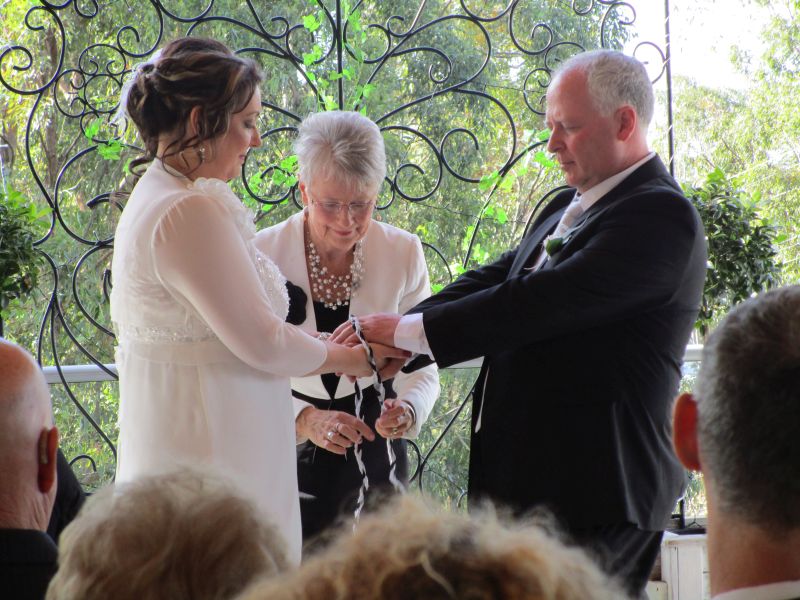In many cultures the ancient ceremony called ‘Handfasting’ was enough for couples to be wed in the eyes of the community. The knot used was called a ‘lovers’ knot’. Couples would cross their right wrists and hold them together. Also stemming from this tradition are the sayings ‘tying the knot’ and ‘I give my hand in marriage’.
There are many rituals that have lasted centuries that symbolise a couples love and commitment. The Handfasting ceremony dates back to the time of the ancient Celts. It was used to acknowledge the beginning of a trial period of a year and a day during which time a couple were literally bound together – hand fasted. It was however a temporary agreement which could be made permanent after the trial period if both parties agreed.
Nowadays, the Handfasting ceremony is only used symbolically, as marriage according to the law in Australia is a lifetime commitment. The bride and groom’s hands are joined together, usually holding hands so the wrists and pulses are touching, with a ribbon or symbolic material looped over the bride and groom’s wrists and tied by the celebrant or a friend.

